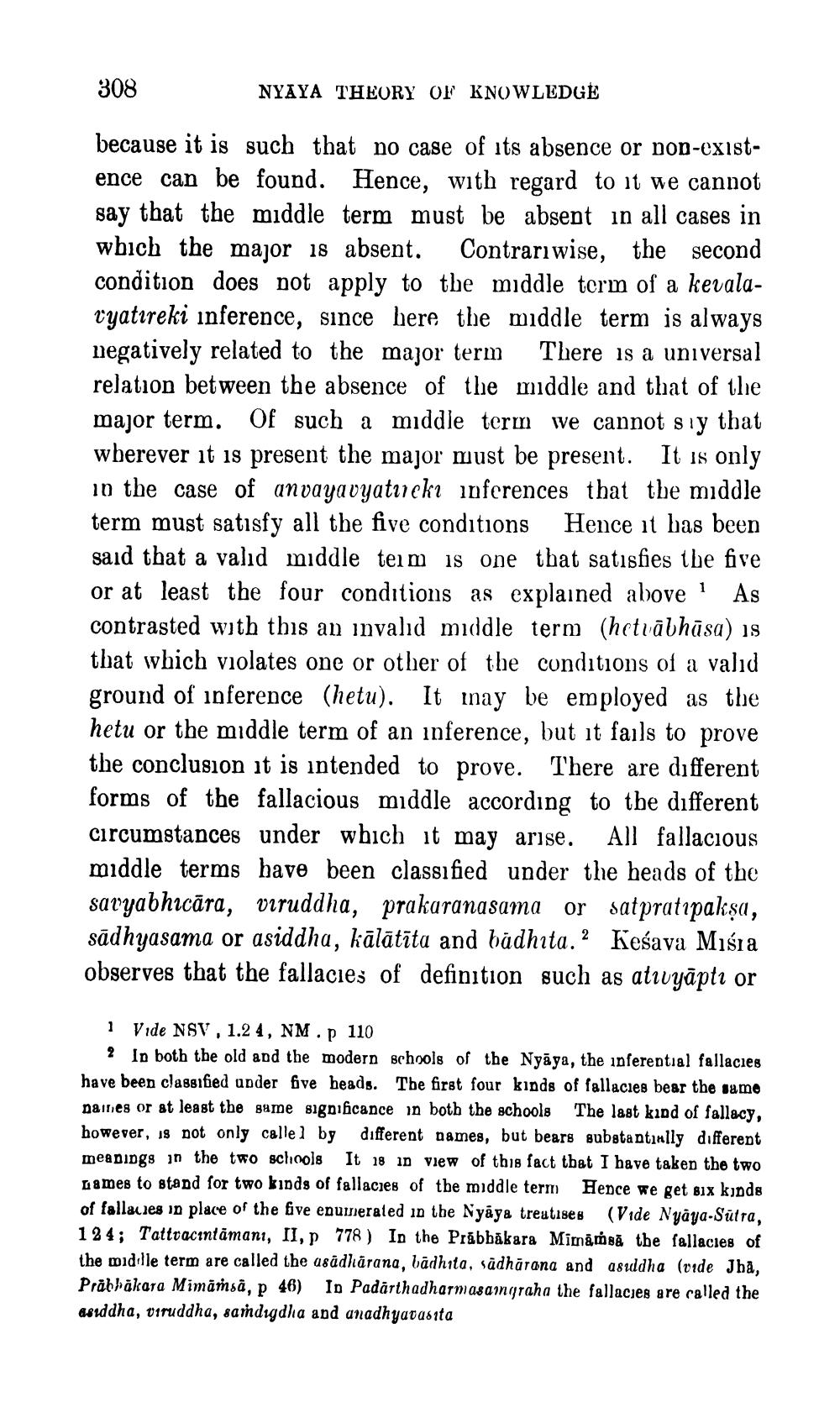________________
308
NYAYA THEORY OF KNOWLEDGE
because it is such that no case of its absence or non-existence can be found. Hence, with regard to it we cannot say that the middle term must be absent in all cases in wbich the major is absent. Contrariwise, the second condition does not apply to the middle term of a kevalaryatireki inference, since here the middle term is always negatively related to the major term There is a universal relation between the absence of the middle and that of the major term. Of such a middle term we cannot siy that wberever it is present the major must be present. It is only in the case of anvayavyatuekı inferences that the middle term must satisfy all the five conditions Hence it has been said that a valid middle teim is one that satisfies the five or at least the four conditions as explained above! As contrasted with this an invalid middle term (hetvābhūsa) is that which violates one or other of the conditions of a valid ground of inference (hetu). It inay be employed as the hetu or the middle term of an inference, but it fails to prove the conclusion it is intended to prove. There are different forms of the fallacious middle according to the different circumstances under which it may arise. All fallacious middle terms have been classified under the heads of the saryabhucāra, viruddha, prakaranasama or satpratipaksa, sādhyasama or asiddha, kālātīta and būdhita. 2 Keśava Mısıa observes that the fallacies of definition such as ativyāptı or
1 Vide NSV , 1.2 4, NM . p 110
2 In both the old and the modern schools of the Nyāya, the inferential fallacies have been classified under five heads. The first four kinds of fallacies bear the same names or at least the game significance in both the schools The last kind of fallacy,
rever, is not only called by different names, but bears substantially different meanings in the two schools It 18 in view of this fact that I have taken the two Dames to stand for two kinds of fallacies of the middle term Hence we get sıx kpds of fallacies in place of the five enuinerated in the Nyāya treatises (Vide Nyaya-Sutra, 124; Tattvacintamani, II, p 778 ) In the Prábbākara Mimamsă the fallacies of the midille term are called the asadlarana, būdhita, sàdharana and asudha (vide Jha, Prabhākara Mimāṁsā, p 46) In Padārthadharmasamgraha the fallacies are called the Gerddha, viruddha, sardigdha and anadhyavasıta




